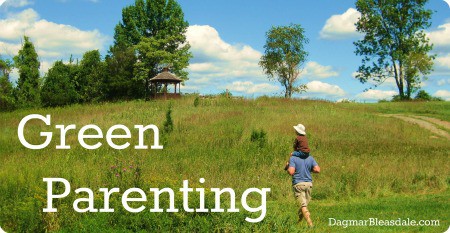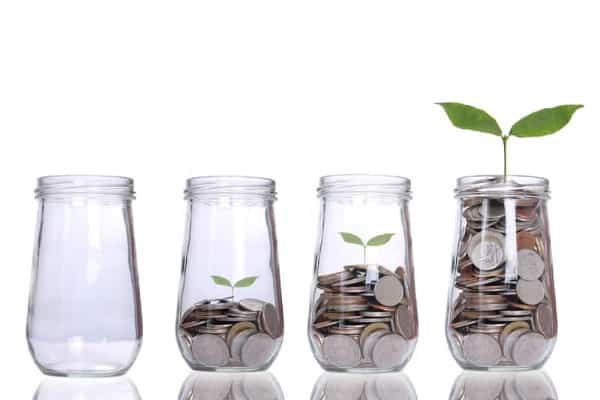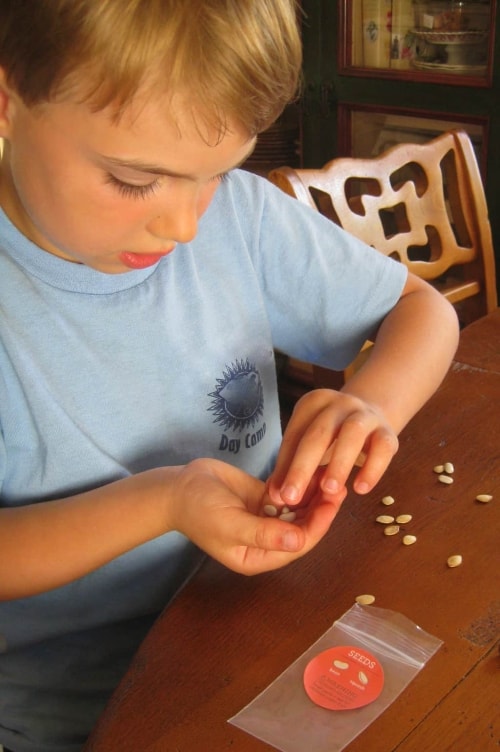When it comes to sustainable, green living, we can either ignore the fact that our earth’s resources are limited or make a positive impact for the next generations. Here are five easy ways to limit our impact on the planet.
As parents, we all want to raise healthy, happy children, but parenting has become infinitely harder now that we have information about the latest and greatest at our disposal every second of the day thanks to Facebook, smartphones, iPad, and Aunt Millie who emails us about the dangers of Pink Slime.
The sheer volume of information out there about the right and wrong way to parent and keeping our family healthy is enough to make your head spin.
We are inundated with daily news alerts about something else that was found to be toxic or unhealthy.
That avalanche of information is an added burden our parents didn’t have to deal with when they raised us, but it’s also an opportunity to react and make positive changes right away.
Regardless of socio-economic status, you can make a positive difference today, every day.
You don’t have to be rich to be able to make an impact.
In fact, having less money forces you to make smarter buying decisions, and as we know, we all vote — and make our voice heard — every time we buy, wear, or eat something.
I personally find that empowering instead of discouraging.
Sustainability is the focus on how the way we live impacts the environment, and what we can do about it.
Managing the consumption of resources is one aspect of sustainability and completely in our hands.
This post includes affiliate links.
5 Easy Ways to Limit Our Impact on the Planet and Create Positive Changes for Generations to Come
1. Whenever possible buy, resell, and trade used items
When my son was little, he rarely got new toys or new clothes. It’s how he grew up, he didn’t know the difference between new or preused clothes, and he didn’t expect new things.
I didn’t see the need to buy new things since he outgrew clothes so fast and I was always able to find inexpensive, gently used clothes and toys for him.
I regularly took toys, books, and clothes my son had outgrown to our local Once Upon a Child store, where I got cash for them. I bet you have similar resell stores near where you live.
I then would use that money to buy gently-used items he needed at OUAC — a new pair of pants or a sweater.
Items the store didn’t want I either donated to our local thrift stores, community center, or passed on to friends with smaller kids.
He now is as tall as I am, and while he wore some of my jeans that were too small for me but fit him exactly. I was able t do that for two years, but now he grew out of the sizes that the resell store carries and I do end up buying new jeans for him.
Here is another tip: up until he was about 10 years old, I made a point to find out about the local school’s, library’s, and moms-with-multiples yearly sales and got amazing deals on book, toys and clothes there every time.
Book swaps at the local library are also an amazing deal to get bags of books for next to nothing.
If you become a member of your local Facebook tag sale groups, you can find amazing deals on pre-worn clothing and shoes and toys as well, and post your own items for sale.
2. Eat more vegetables and organic food — and less meat
You don’t have to be a vegetarian like me to make a positive impact on sustainability.
The fact is that the way we mass-produce meat in American is simply not sustainable and not healthy. It takes much more energy to produce meat — between 5 and 20 pounds of grain, corn, or soy to produce one pound of beef.
Cattle who naturally eat grass are being fed corn, grain, and soy here. They get sick from that and then require huge amounts of antibiotics, which end up polluting our water sources and which you end up consuming when you eat meat.
So if you eat less meat just one day a week, it would make a big, positive environmental impact.
Plus, you’ll limit the amount of antibiotic-laden meat you consume, which will benefit your health. With the money you will be saving, you can buy organic fruit and vegetables.
3. Plan your day so you make one trip instead of two
It’s a win-win solution: you will spend less time in the car, save money on gas, and you’ll pollute the air less.
If you have older kids who want to be driven around from one friend to the next, take that opportunity to coordinate your and their day with them and stretch the cost of gas and resulting air pollution.
4. Make your voice heard — through green living advocacy in your community or social media
Advocating for a greener, more sustainable way of living could mean signing a petition to insist on the labeling of GMO foods, starting a recycling program at your child’s preschool, or telling your local friends about the Earth Day event you heard about.
I personally love to use the influence I have on social media for social good, and I make it a point to retweet informative tweets about green living.
When I found out about the book swap, for example, I made sure to retweet that and share it on my Facebook wall.
I blog about avoiding toxic cleaners that are not only terrible for the environment but for our children’s health, and let people know that anyone can make cleaners for less money with natural ingredients.
It doesn’t cost me anything to write that blog post, but if just one person stops using bleach, I’ve made a big impact.
5. Teach your children about sustainability
Teach by example. It doesn’t cost anything to teach a child about reusing and recycling, but it has a lasting effect.
I wasn’t aware that my parents taught me about green living, but they did by showing me how to use the least amount of resources and to reuse or recycle as much as possible.
It was just a way of life, one I only became aware of when I move to the Unites States.
Confronted with the consumerism and waste that is prevalent here compared to what I grew up with in Germany, it instantly made me an advocate for change here.
Information about greener living is at our fingertips nowadays, and every one of us has the opportunity to lead by example and teach our children about sustainability and our impact on our planet.
Sharing resources with your community about a healthier, greener, more sustainable lifestyle doesn’t take a lot of time, money, or effort but makes a big impact on all of our lives and generations to come.
You can find wonderful local Facebook groups of like-minded people and exchange information about parenting, resources, and green living.
What do you do to live more sustainably?
You Might Also Like These Posts:
- The Danger of GMO and Why I Now Only Buy Organic Food
- Why You Should Worry About Eating Gene-Manipulated Food
- Extreme Couponing for Organic and Natural Food
- 5 Tips to Save Money on Organic Food
- 7 Easy Changes To Go Green in Your Home
- Tips on Being Frugal and Green
- 14 Ways to Save Money and Be Green
- Protect Your Children From Toxic Air Fresheners
- Is Your “Green” Cleaning Product Really Green?
- How To Avoid Genetically Modified and Engineered Food




